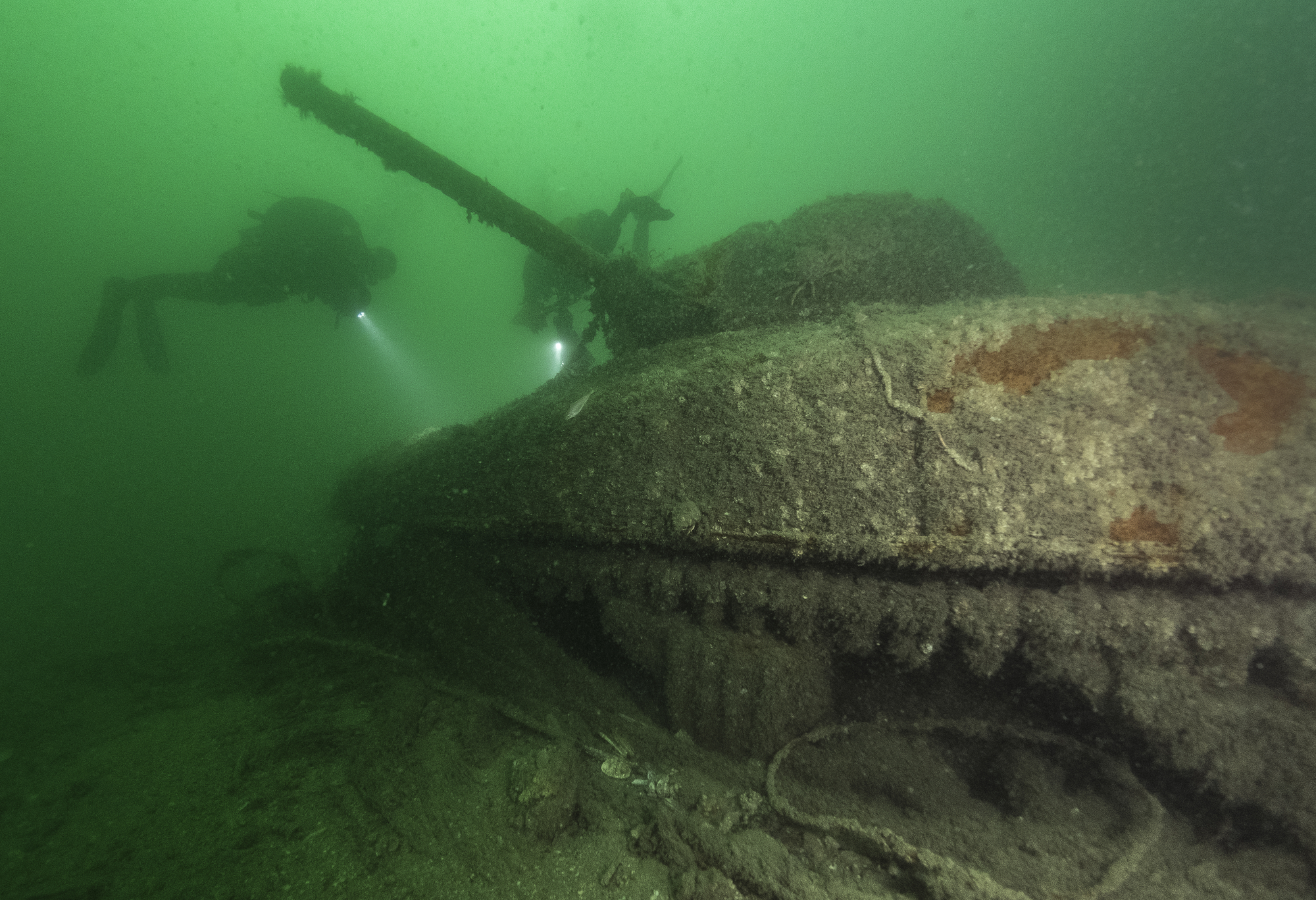
- Home
- Immersion on the wrecks of the Normandy landings
- Support and escort forces
Although Operation Neptune was above all a logistical operation, a variety of warships were mobilised by the Allies in order to counter the German artillery and protect the convoys.
Battleships and cruisers, the support forces
Battleships, with their heavy artillery, were the principal naval firepower supporting the Normandy landings. Only seven were engaged; four British battleships covered the eastern flank and three American battleships faced the beaches. These units were joined by three American heavy cruisers, 19 British light cruisers, three French and three Dutch gunboats. All these vessels were tasked with neutralising the German batteries.
There are no cruiser or battleship wrecks associated with the D-Day landings on the bottom of the Baie de Seine, with the exception of the battleships Centurion and Courbet and the cruiser Sumatra, which only served as blockships in the Gooseberries. The sole cruiser lost during the operation was the HMS Dragon, a British D-class cruiser torpedoed on 8 July 1944 in the Sword Beach area, before being scuttled as a blockship off Courseulles on the 10th. A wreck located off of Lion-sur-Mer was once thought to be this cruiser. However, the position of the wreck does not correspond to the known position of the Dragon. Based on the data obtained during an operation conducted in 2013 (S. Pascaud, director), it appears to be HMT Gairsay, a British armed trawler built in 1941. The dimensions, general appearance and condition of this site are entirely compatible with this identification. Like other armed trawlers, the Gairsay took part in the Normandy landings as an escort vessel. It was then integrated into the Trout Line, a line of armed ships anchored to the north of the Courseulles-sur-Mer Gooseberry (breakwater), intended to protect the eastern flank of the landing area, from 23 June to 11 September 1944. On 4 August 1944, it was attacked by the Germans and lost, along with 31 crew members.
Destroyers and escort vessels, the escort forces
In addition to the battleships and cruisers, 105 destroyers (39 of which were American) had to first provide fire support for the troops landing on the beaches and, secondly, escort the convoys across the Channel. The D-Day escort forces also included 61 corvettes, 41 frigates and 11 avisos. Several wrecks of destroyers involved in the landings remain in the Baie de Seine.
Apart from the Svenner and the Lawford, these are American units. The USS Corry, which received early fire from the German batteries at dawn on 6 June before being blown up by a mine, was extensively scrapped after the war. The meagre remains of the USS Meredith have been located east of the Banc du Cardonnet as well as the wrecks of the USS Rich and the USS Glennon off Utah Beach. The latter struck a mine on 8 June 1944. The Rich, which had come to its assistance, also hit two mines (resulting in 89 casualties). The crew of the Glennon, assisted by other ships, tried to save their ship for two days before it finally sank under fire from the Quinéville battery, leaving 25 dead and 38 missing.
The Lawford, a short-lived command post
The command of Operation Neptune was initially provided from the sea, from abord four British troop transports and twelve smaller units (frigates and escort destroyers). Among the latter was the Lawford, one of the four command ships in the Juno sector. It was one of the 29 American escort destroyers manned by British sailors (Captain class). The Lawford was sunk on 8 June 1944 by a German aircraft bomb, killing 24 and wounding six. Its remains are now scattered in three areas. The stern and bow are better preserved than the central part of the vessel. By diving on the wreck, we can still see the propeller shafts, the keel, the badly corroded hull and, in the bow area, a gun and an ASDIC.
Partners and authors
Associated media
Open Media Library

The French battleship Courbet in 1913

The Dutch light cruiser Sumatra

The armed trawler HMT Gairsay
Multibeam echo sounder survey of the wreck presumably corresponding to the Gairsay

Stem of the wreck presumed to be the trawler Gairsay
Multibeam echo sounder survey of the destroyer USS Meredith

The destroyer USS Rich striking a mine on 8 June 1944

The destroyer HMS Lawford
Multibeam echo sounder survey of the destroyer HMS Lawford

Cannon on the deck of the HMS Lawford

